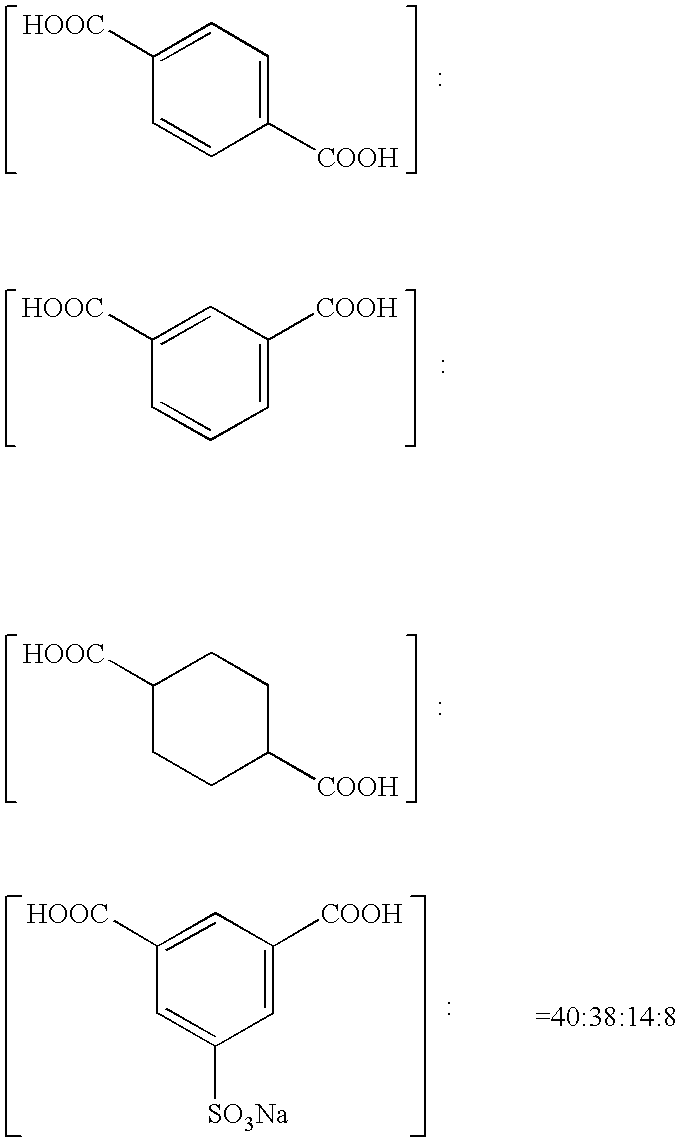Planographic printing plate material, planographic printing plate, and printing process employing the same
a technology of planographic printing plate and material, which is applied in the direction of lithography, photosensitive materials, instruments, etc., can solve the problems of increasing the cost of the device, reducing the image formation speed, and no proposal of processless plate material having sufficient printing properties, etc., and achieves simple water development and high printing durability.
- Summary
- Abstract
- Description
- Claims
- Application Information
AI Technical Summary
Benefits of technology
Problems solved by technology
Method used
Image
Examples
example 1
[0148] Employing terephthalic acid and ethylene glycol, PET having an intrinsic viscosity VI of 0.66 (at 25° C. in a phenol / tetrachloroethane (6 / 4 by weight) solvent) was prepared according to a conventional method. The resulting polyethylene terephthalate was formed into pellets, dried at 130° C. for 4 hours, and melted at 300° C. The melted polyethylene terephthalate was extruded from a T-shaped die onto a 50° C. drum, and rapidly cooled. Thus, an unstretched film sheet having an average thickness of 175 μm was obtained. The film sheet was stretched in the mechanical direction at 102° C. by a stretching magnification of 1.3, and then at 110° C. by a stretching magnification of 2.6. Successively, the stretched film sheet was further stretched at 120° C. by a stretching magnification of 4.5 in the transverse direction in a tenter. The resulting sheet was heat fixed at 240° C. for 20 seconds and relaxed at 240° C. in the transverse direction by 4%. Thereafter, the sheet at the chuck ...
PUM
 Login to View More
Login to View More Abstract
Description
Claims
Application Information
 Login to View More
Login to View More - R&D
- Intellectual Property
- Life Sciences
- Materials
- Tech Scout
- Unparalleled Data Quality
- Higher Quality Content
- 60% Fewer Hallucinations
Browse by: Latest US Patents, China's latest patents, Technical Efficacy Thesaurus, Application Domain, Technology Topic, Popular Technical Reports.
© 2025 PatSnap. All rights reserved.Legal|Privacy policy|Modern Slavery Act Transparency Statement|Sitemap|About US| Contact US: help@patsnap.com


